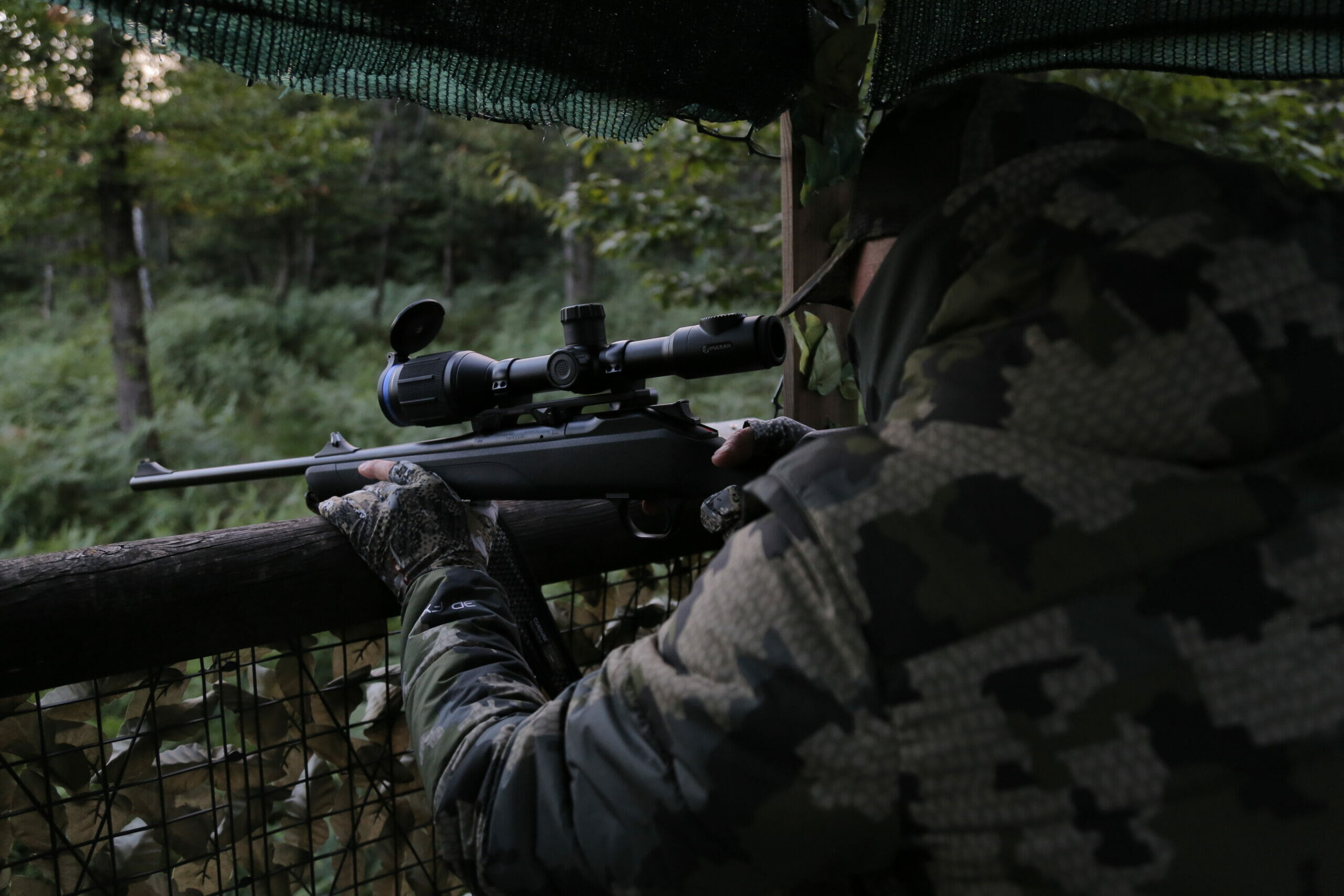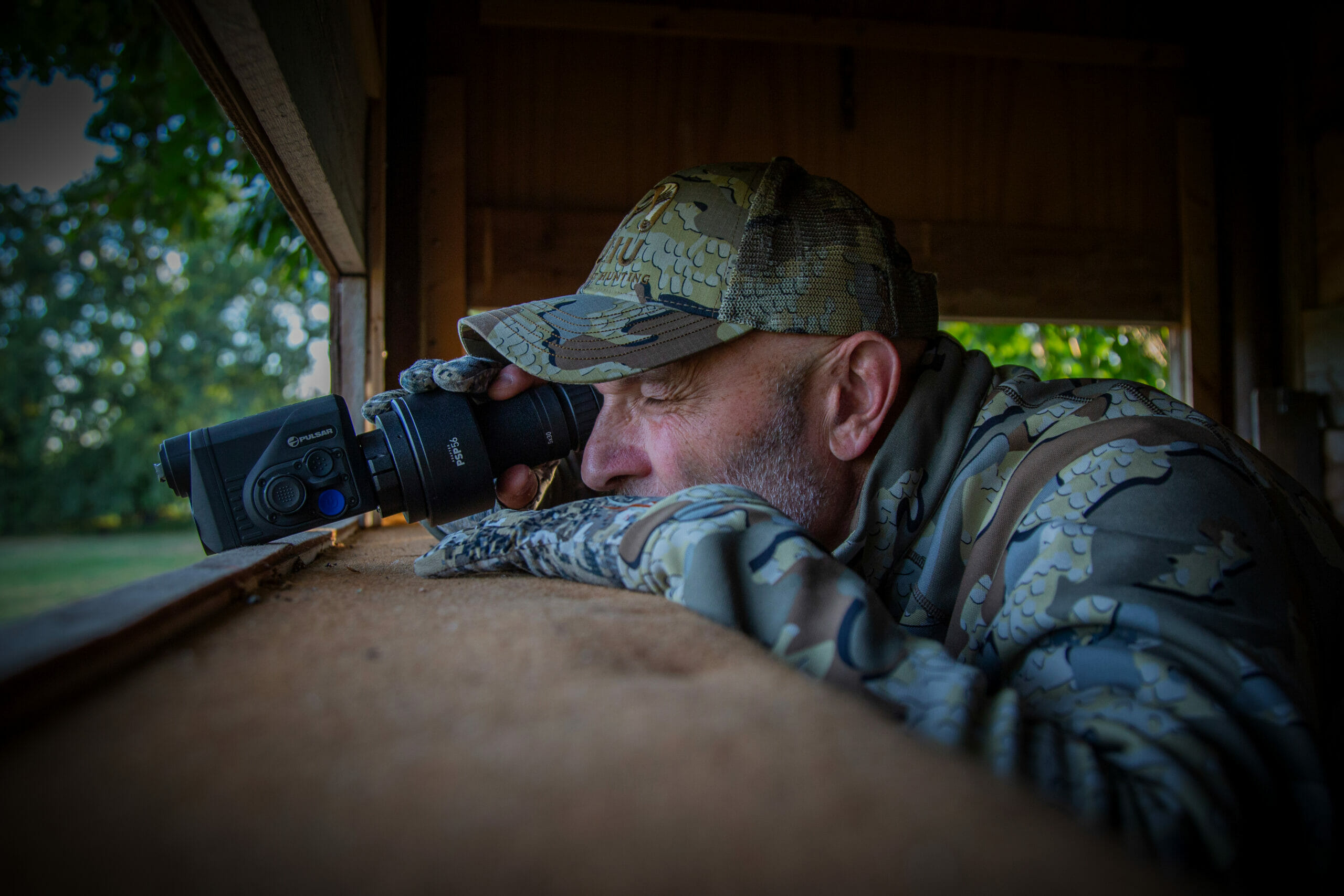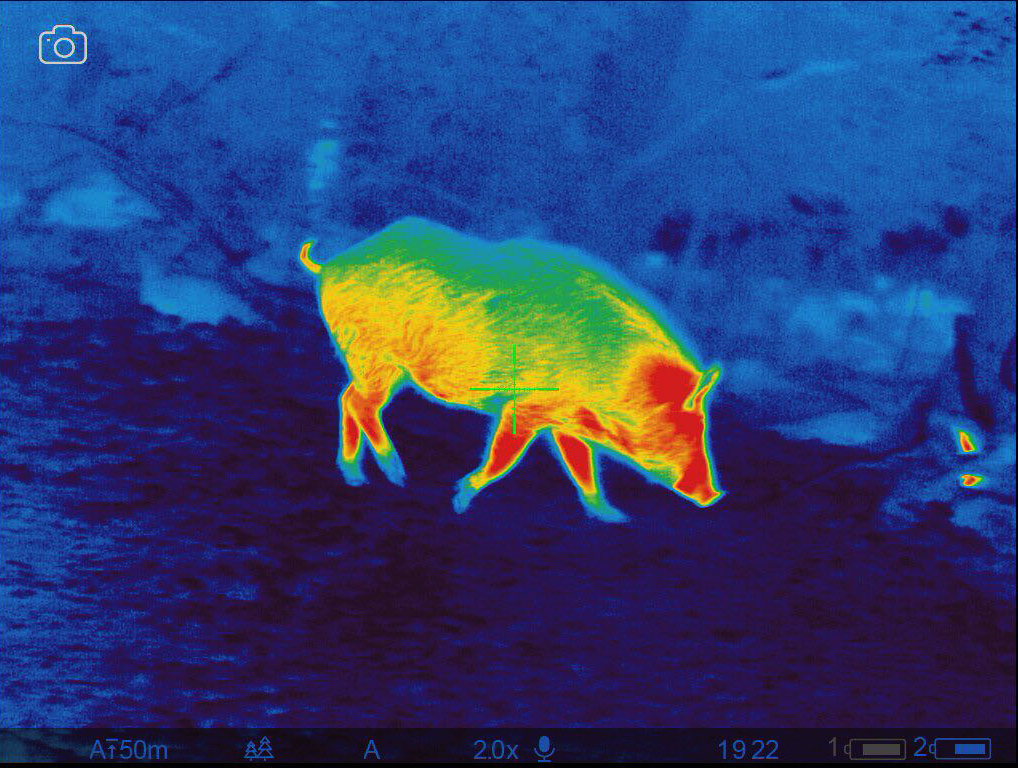Typically, hunters use thermal vision to spot and identify the animal – its species, age, and sex. But if you’ve got some experience in the field, you can tell more about it – if it’s healthy or sick, calm or alarmed, nursing or not. Our brand ambassador from Italy, Riccardo Tamburini, is a true expert on this, so, naturally, we asked him to share some of his knowledge about assessing an animal through thermal vision. We hope you’ll find this beneficial!
A brief introduction to animal biology
To understand how thermal imaging works, you need to understand the basics of animal biology. Whenever you look at an animal, you will see certain parts appearing as the hottest – these will be the head and the legs. There are a few reasons for it. The head appears “red” because the eyes, brain, and ears always have a high blood flow. The legs have a higher blood flow because they typically have less fur, meaning they need more blood to keep warm. In some animals, typically with less-isolating fur, you can also see the lungs and heart appearing hotter because these two organs are vital, too.
Signs you should look for
An easy way to tell if an animal has spotted you – or any other danger – is to see how much of its body appears hot. If it’s only the organs I’ve mentioned before, you’re likely fine. But, if the whole body turns red, it means the animal is alert and all ready to bolt away. To spot this with a Pulsar device, you should turn the Ultramarine color palette on.
Whether a female animal is nursing or not can be the deciding factor for many hunters whether to harvest it or not. If you have a high-end device like Pulsar Thermion 2 XP50 PRO, it is super easy to tell if a female boar is nursing – her nipples will appear long and thick.
In winter, it might become more complicated to tell certain things about an animal – this is because they grow thicker fur. However, the quality of new thermal devices easily shows the map of body temperature. Although it depends on the animal: it’s always easy with roedeer because they change their status quickly, remaining in an open area and barking against the danger. It’s more difficult with wild boars, for example, because they always go away when alarmed. It’s quite impossible with birds: in the capercaillie video taken using the white hot palette, the body is completely black (it should have been white), telling us that the body – or the feathers – are completely insulating.
Thermal imaging also allows spotting an ill animal. Of course, you can’t identify all diseases, but it is useful to know that some of them cause the failure to change fur. You can’t always spot that with a naked eye, but with thermal vision, it is easy to tell if one animal has significantly more or less insulating fur.
Eating habits
If an animal has just eaten and is digesting, you will also notice how the stomach and the gut area turn hotter. During digestion, all mammals, including humans, use a lot of blood flow for it. In fact, this is why after you have eaten too much, you are sleepy: you have less blood in the brain because a lot of it is used for digestion.
Keep in mind, however, that animals have different eating habits. Roedeers, for example, have a very high feeding frequency: around 10-12 times per day, so the stomach area is often red). Talking about deers, the frequency is lower, and when they come to a feeding point, their stomach is empty, and you can see body temperature is low in the gut-stomach area.
Wild boars have a stomach quite similar to ours, so digesting is long and complex. Boars are defined as “monogastric” because their stomach has only one “room”. Other ungulates are “polygastric” due to the presence of different and separate stomach rooms.
Before purchasing any night or thermal vision device, please make sure you adhere to the local legislation and only use it when it is allowed. Our ambassadors come from various countries and travel a lot, which allows them to test different devices. We do not encourage or support the illegal use of our devices in any events. If you wish to learn more about export and sales restriction policy, please visit the following link: Export and Sales Restriction Policy.



